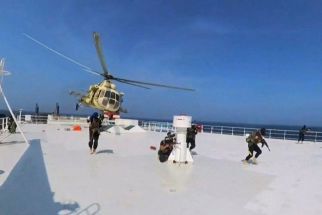DOH lists 23 more firecracker injuries
December 31, 2005 | 12:00am
Twenty-three more people were injured by firecrackers yesterday, bringing to 132 the total number of injuries related to the New Year celebration, a report of the Department of Health (DOH) said.
The report, prepared by the DOH’s National Epidemiology Center (NEC), covered the period Dec. 21 to Dec. 30. The additional 23 cases of firecracker injuries were recorded from 6 a.m. of Dec. 29 to 6 a.m. yesterday.
NEC fellow Dr. Darius Sebastian said the number of stray bullet injuries and watusi (dancing pyrotechnics) poisoning remain at eight and six, respectively.
Sebastian noted that in general, the total of 132 cases — 118 of which were firecracker-related — was significantly lower compared to the same period last year when the DOH registered 171 cases.
From Dec. 21 to Dec. 30 last year, there were 10 people hit by stray bullets. It was observed, however, that only two people were poisoned by watusi during the same period.
Two of the fatalities from watusi ingestion this year were adult males. The watusi poisoning victims ranged in age from 10 months to 33 years.
The DOH report showed that Metro Manila accounted for 67 of the firecracker-related injuries, followed by Central Visayas with nine, Central Luzon with eight and the Ilocos Region and Northern Mindanao with six cases each.
The report also showed that six of the eight stray bullet cases occurred in Metro Manila and the rest happened in Bicol. Metro Manila also accounts for four of the six watusi-poisoning cases, followed by Central Luzon and Southern Tagalog with one each.
The report showed that "five star" and "Piccolo" were the most commonly used firecrackers.
Meanwhile, the DOH reiterated its call for the public to stop using firecrackers and firing guns to welcome the New Year.
Filipinos adopted from the Chinese the practice of ushering in each new year with loud noise barrages, supposedly meant to drive away evil spirits.
But over the years, this practice has caused injuries, loss of limbs, eye and hearing impairment and even deaths.
Dr. Ernie de Vera, program manager of the DOH’s "Four-mula Kontra Paputok 2005" project, maintained that there are other devices that could be used to generate noise.
He added that using firecrackers is not only a waste of money but also puts people in danger.
The report, prepared by the DOH’s National Epidemiology Center (NEC), covered the period Dec. 21 to Dec. 30. The additional 23 cases of firecracker injuries were recorded from 6 a.m. of Dec. 29 to 6 a.m. yesterday.
NEC fellow Dr. Darius Sebastian said the number of stray bullet injuries and watusi (dancing pyrotechnics) poisoning remain at eight and six, respectively.
Sebastian noted that in general, the total of 132 cases — 118 of which were firecracker-related — was significantly lower compared to the same period last year when the DOH registered 171 cases.
From Dec. 21 to Dec. 30 last year, there were 10 people hit by stray bullets. It was observed, however, that only two people were poisoned by watusi during the same period.
Two of the fatalities from watusi ingestion this year were adult males. The watusi poisoning victims ranged in age from 10 months to 33 years.
The DOH report showed that Metro Manila accounted for 67 of the firecracker-related injuries, followed by Central Visayas with nine, Central Luzon with eight and the Ilocos Region and Northern Mindanao with six cases each.
The report also showed that six of the eight stray bullet cases occurred in Metro Manila and the rest happened in Bicol. Metro Manila also accounts for four of the six watusi-poisoning cases, followed by Central Luzon and Southern Tagalog with one each.
The report showed that "five star" and "Piccolo" were the most commonly used firecrackers.
Meanwhile, the DOH reiterated its call for the public to stop using firecrackers and firing guns to welcome the New Year.
Filipinos adopted from the Chinese the practice of ushering in each new year with loud noise barrages, supposedly meant to drive away evil spirits.
But over the years, this practice has caused injuries, loss of limbs, eye and hearing impairment and even deaths.
Dr. Ernie de Vera, program manager of the DOH’s "Four-mula Kontra Paputok 2005" project, maintained that there are other devices that could be used to generate noise.
He added that using firecrackers is not only a waste of money but also puts people in danger.
BrandSpace Articles
<
>
- Latest
- Trending
Trending
Latest
Trending
Latest
Recommended






























